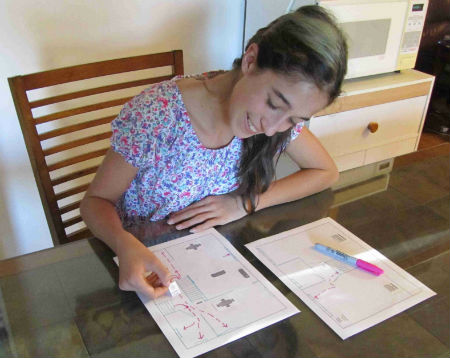Make an Emergency Plan

It is important to ensure that the entire family is prepared and informed in the event of a disaster or emergency. You may not always be together when these events take place and should have plans for making sure you are able to contact and find one another.
Download a Home Plan Template
- Determine the best ways to evacuate your home in case of an emergency such as a home fire.
- Make sure adults and older children know where fire extinguishers, water, electric and gas utilities are located.
- Make sure everyone in the house knows the location of your emergency kit.
- Establish a safe place for your family to meet outside your home and outside your neighbourhood.
- Include a plan for evacuating your pets.
- Practice your evacuation plan frequently.
- If you can’t evacuate your home, prepare to be self-sufficient in your home for at least three days (or seven to 10 days in a health emergency).
- If a member of your family has special needs that would require extra assistance, include those details into your family emergency plan and emergency kit.
- Know the plans for your workplace, school, community centre, etc. in the event a disaster happens when you are not at home.
Know Your Neighbourhood
- Work with your neighbours to identify people who may need extra help during an emergency, or who you can turn to for help.
- Identify your community’s emergency plan.
- Identify your community’s evacuation routes.
- Identify where emergency shelters are located.
- In the event of a disaster, listen to local radio and television. If local officials or community leaders ask you to evacuate your neighbourhood, follow the routes and go to the location specified. Do not take shortcuts as they could take you to a blocked or dangerous area.
Establish an Out of Town Emergency Contact
- Plan for each family member to call or e-mail the same out-of-town contact person in case of an emergency.
- Choose an out-of-town contact that lives far enough away that he or she will not have been affected by the same event.
- Ensure that the designated person knows they are your family contact.
- Ensure that you and your family members know or carry the number and e-mail address.
Preparing Emotionally for Disasters and Emergencies
Disasters and emergencies can impact us not only physically but also emotionally. It is helpful to prepare for the possible emotional and social impacts of disasters and emergencies by understanding your stress, and resilience.
Plans for Specific Types of Emergencies
Other Resources
For more information on how to help prepare your children for an emergency, download the Expect the Unexpected Guide for Parents and caregivers.
Visit getprepared.ca and other websites to learn more about your exposure to hazards, your family’s special needs and how you can help others.
Download our free home planning guide, list of essential emergency kit items, and Be Ready brochure to guide you with the information and tools you need to be better prepared.
Part of being prepared is understanding the stress disasters add. Learn More
